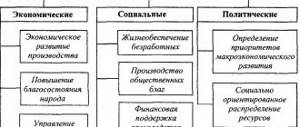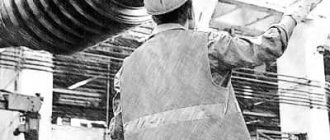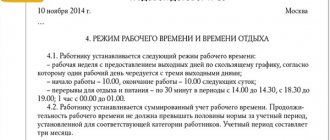What is labor protection
Labor protection at an enterprise is a system for preserving the life and health of workers in the process of work. Typically, labor protection is considered in three aspects: as an institution of labor law, an element of labor relations and the subjective right of workers.
The main task of labor protection is to prevent injuries at work, prevent occupational diseases, and also minimize social consequences. During activities at each workplace, socially acceptable or minimal risk is ensured.
Basic occupational safety measures
Legal measures involve the creation of a system of government regulations, which consists of safety standards and means to ensure their compliance. The system is based on the Constitution, the Labor Code of the Russian Federation, and other legal and by-laws.
Socio-economic measures consist of government incentives for employers who do not violate labor safety standards and requirements.
For example, in order to support responsible employers, differentiation of tariffs for compulsory social and pension insurance has been developed, reimbursement of costs from the Social Insurance Fund, etc. is provided. Reference: the appendix to the order of the Ministry of Labor of Russia dated December 10, 2012 No. 580n lists the main expenses that can be reimbursed from the Social Insurance Fund.
In addition to them, in 2021, employers have the right to expect reimbursement of costs for the purchase of PPE to prevent coronavirus infection in the organization. Fragment of the appendix to order No. 580n
Organizational and technical measures are a system that is developed by the employer based on legal requirements. It includes the organization's policy regarding labor protection, goals and means of achieving them.
Sanitary and hygienic measures are aimed at reducing the level of exposure to harmful and hazardous production factors. These include production control, laboratory and instrumental environmental studies, and vaccination of workers. The main task of management is to ensure favorable working conditions and protect the life and health of subordinates.
Treatment and preventive measures include medical examinations, psychiatric examinations, milk distribution, etc.
Information: replacing therapeutic and preventive nutrition with monetary compensation is prohibited, as stated in paragraph 11 of the rules approved by order No. 46n dated February 16, 2009.
Rehabilitation measures are a set of measures that are carried out to restore the health and ability to work of employees injured as a result of an accident or due to the acquisition of chronic diseases.
Rehabilitation measures include sanatorium treatment, transfer to light work, reimbursement of treatment costs, etc. The full list is specified in Art. 212 Labor Code of the Russian Federation.
How to find out the level of danger
Special working conditions: what are they?
In total, there are 4 types of conditions:
- Optimal.
- Acceptable.
- Harmful (divided into harmful degrees 1, 2, 3, and 4).
- Dangerous.
Important! Safe working conditions are characterized by the absence of any threats to the health or life of the worker. The Legal Code states that an employee has the right to move to another department or change workplace in order to ensure safety at the enterprise.
In total there are 4 degrees of working conditions
The working environment is assessed by the following parameters:
- Physical - level of humidity and temperature in the room, presence of dust in the air, air currents, level of vibration and noise, level of illumination, electromagnetic radiation.
- Chemical - alkalis, chemicals, acids or paints and varnishes.
- Biological - infections, microorganisms and spores.
- Loads (dynamic or static) - body position during working hours, turns and tilts of the body, weight of objects lifted, frequency of movements and distance.
- The intensity of work activity is the presence of similar movements repeated many times over a long period of time, as well as mental or emotional stress.
Note! These criteria will help determine the level of danger at work, and then lawyers will help you draw up competent acts or statements, if necessary.
Who should be appointed responsible for labor protection at the enterprise?
Labor protection of workers may be the responsibility of the direct employer, occupational safety specialist or service employees. In Art. 217 of the Labor Code of the Russian Federation states that it is necessary to introduce a staff unit or department only if the company employs more than 50 people.
An employee appointed to the role of occupational safety inspector must meet the qualification requirements of the professional standard “Occupational Safety and Health Specialist”, approved. By Order of the Ministry of Labor and Social Protection of August 4, 2014 No. 524n. Before being allowed to work, he must be sent to occupational safety training. A 40-hour course at a training center is suitable - this is stated in clause 2.3.2 of the Procedure for training and testing knowledge of labor protection requirements for employees of an organization dated January 13, 2003 No. 1/29.
➤
If a labor protection specialist cannot cope alone, a service of several people is created. They make preliminary changes to the staffing table, develop job descriptions, and adjust the OHS regulations.
Job description of a labor protection specialist
Reference: the number of service employees is determined depending on the severity and danger of production processes and the total number of employees of the organization. In addition, they take into account the Intersectoral standards for the number of workers in the labor protection service, which were approved by Resolution of the Ministry of Labor dated January 22, 2001 No. 10.
Cheat sheet: how to distribute responsibilities between department specialists
Labor safety work is controlled by the chief engineer, technical or general director, or, in extreme cases, by their deputies. In this case, the head of the service bears responsibility for the work of all inspectors.
Legislation governing the issue
The employer must follow all legal requirements. Detailed information can be found in the Labor Code. All questions regarding the terms of the contract and working conditions with employees are detailed here. Responsibilities on the part of the customer and the contractor.
There is also a chapter that discusses working conditions and their classification in detail. It is called “Article 14. Classification of working conditions”. Here are 9 points that cover all terms. In the next article numbered “15” you can find information about the results of the check.
Every specialist must know his rights
This information is sufficient to determine whether there is a threat to the health of workers at the enterprise. If the situation is truly dangerous to the health of workers, then proceedings should be initiated in accordance with the legal code. It is also recommended that you carefully read the Labor Code before taking direct action.
Organization of labor protection from scratch
Only an experienced specialist who has been working in his profession for several years can develop a labor protection system in an organization. If you entrust this task to a novice, mistakes are possible that could cost human lives.
What basic laws should we rely on when developing a system?:
- Federal Law of March 30, 1999 No. 52-FZ “On the sanitary and epidemiological welfare of the population.”
- Federal Law of November 21, 2011 No. 323-FZ “On the fundamentals of protecting the health of citizens in the Russian Federation.”
- Resolution of the Ministry of Labor of Russia dated 02/08/2000 No. 14 “On approval of Recommendations for organizing the work of the labor protection service.”
- Federal Law of December 28, 2013 No. 426-FZ “On SOUT”.
- Federal Law of July 21, 1997 No. 116-FZ “On Industrial Safety of Hazardous Production Facilities.”
What the employer and the safety department must do to ensure labor safety in the organization
When choosing measures, it is recommended to rely on Order of the Ministry of Labor of Russia dated March 1, 2012 No. 181n “On approval of the Standard List of measures annually implemented by the employer to improve working conditions and safety and reduce levels of occupational risks.”
In general, managers, together with service specialists, must adhere to the paragraphs of Art. 212 of the Labor Code of the Russian Federation, which establishes the following responsibilities:
- ensure safety during operation of equipment, buildings, tools and other things;
- issue personal protective equipment, disinfectants, etc.;
- create optimal working conditions at each workplace;
- check whether labor protection requirements are met by employees and managers;
- conduct a special assessment of working conditions;
- control the sanitary and medical care of workers, work and rest schedules;
- send workers for medical examinations and examinations;
- conduct labor safety briefings, send specialists to advanced training courses;
- follow the instructions of the GIT.
The list of events may be updated. If the company does not have financial difficulties, occupational safety at the enterprise may involve taking additional measures to maintain the health of employees. For example, it is possible to organize sanatorium-resort treatment at the expense of the employer, conduct extraordinary examinations in clinics, etc.
Tasks
The most basic functions of the labor protection service in an organization depend on the tasks facing this structure. And the Ministry of Labor includes the following 5 positions:
1. Organization of compliance by personnel with labor protection requirements.
2. Monitoring compliance by personnel:
- laws and other regulatory legal acts on labor protection;
- collective agreement;
- labor protection agreements;
- other internal regulatory requirements of the organization.
3. Organization:
- prevention of industrial injuries, occupational diseases;
- work to improve working conditions.
4. Information and consultations for the organization’s personnel and its manager on labor protection issues.
5. Study and implementation of modern labor protection practices, as well as promotion of labor protection.
Also see “How to ensure the functioning of the OSMS: actions and plans of the employer.”
What documents on labor protection to prepare?
All labor safety measures must not only be carried out, but also documented. Otherwise, the next visit of the GIT inspector will result in proceedings and payment of fines. Optimization and systematization of document flow will avoid problems.
Table. Occupational safety: documents 2020
| Provisions | Regulations on OSMS Regulations on the labor protection service Regulations on on-the-job internships along with internship programs Regulations on providing workers with PPE |
| Labor protection orders | · Order on the appointment of persons responsible for labor protection · Order of the head on the creation of a permanent commission to test knowledge of labor protection requirements · Order on approval of labor protection instructions · Order on organizing the free distribution of flushing and (or) neutralizing agents · Order on approval of the list of workplaces and the list of employees for whom soap or dispensers with liquid detergent are provided in sanitary premises · Order on the creation of a commission to conduct a special assessment · Order approving the schedule for carrying out special assessment and assessment work · Order on the preparation of an action plan to improve working conditions and safety · Order on the appointment of a person responsible for assigning electrical safety group I to non-electrical personnel · Order appointing someone responsible for the operation of the racks |
| Magazines | · Introductory briefing logbook · NS registration log · Log book for assignment of group I for electrical safety to non-electrical personnel · On-the-job training log · Magazine of fire safety briefings |
| Programs | · OSH induction program · On-the-job training programs · Industrial sanitary control program · OSH training programs by position, profession · Action program to improve working conditions and safety |
| Lists and lists | · List of professions and positions of employees exempt from initial training · List of employees who are subject to medical examinations · List of workplaces and list of persons for whom the issuance of flushing and neutralizing agents is mandatory · List of harmful and (or) hazardous production factors subject to research and measurement · List of positions and professions requiring assignment to personnel of group I in electrical safety · List of professions and positions that are entitled to free workwear, safety footwear and other personal protective equipment |
| Instructions | Job descriptions for labor protection service specialists Labor protection instructions for each profession or position |
| Other documents | Copies of certificates and declarations of conformity for personal protective equipment and flushing agents Personal cards for recording the issuance of personal protective equipment |
Important! This is not an exhaustive list of labor protection documents. The list may be updated depending on the specifics of the company’s activities.







